To be truly happy and fulfilled, human beings rely on robust and lasting relationships. Countless research reports reveal that our mental, physical, and emotional health is heavily influenced by the quality of relationships we have. It also helps us live longer, deal with stress better, and improve our social well-being. This concept applies not just on the personal level, but in the Business-to-Business (B2B) industry, too!
Building enduring relationships with your customers is a critical component of every sales strategy. It ensures that you get your potential customers acquainted with your enterprise and makes sure that you don’t miss out on potential customers. Establishing connections with your customers provides the perfect opportunity for you to inform, educate, and build trust to convince them to buy your products or services.
It’s understandable that not everyone makes an immediate purchase decision. As a seller, it’s your responsibility to assist those who are undecided. Employing effective marketing and sales tactics can assist in converting hesitant shoppers into satisfied customers.
The process doesn’t end here, though. The main goal is to generate repeat customers who are loyal to your brand, so keeping up with effective sales strategies even after they’ve made a purchase is important.
Before you reach your business goal to attract customers and convert them into loyal, paying ones, you need to have a strong and effective lead generation strategy. Lead generation refers to the procedures used in marketing and sales to attract and capture the attention of potential customers for a company’s product or service. Its goal is to establish a sales pipeline by converting these leads into opportunities and nurturing them until the final deal is closed.
Despite being a need for every B2B business, most companies in Australia find lead generation challenging due to the unique characteristics of the B2B market. These businesses often have a specific target audience, but finding and effectively marketing to them can be difficult due to the complexity of the decision-making process and the multiple decision-makers involved.
There is often intense competition for leads in B2B, and businesses may have limited budgets for marketing. Finally, B2B sales cycles can be longer than in B2C, which requires a patient and persistent approach to lead generation.
We understand that lead generation serves as the lifeline of every business out there and why it matters to find and use the right tools to help you maximize your efforts and streamline all your business functions. Now, the real question is: How far can you go just to generate leads for your business? Here is where Customer Relationship Management (CRM) comes into play.
Customer Relationship Management: Its importance to your business
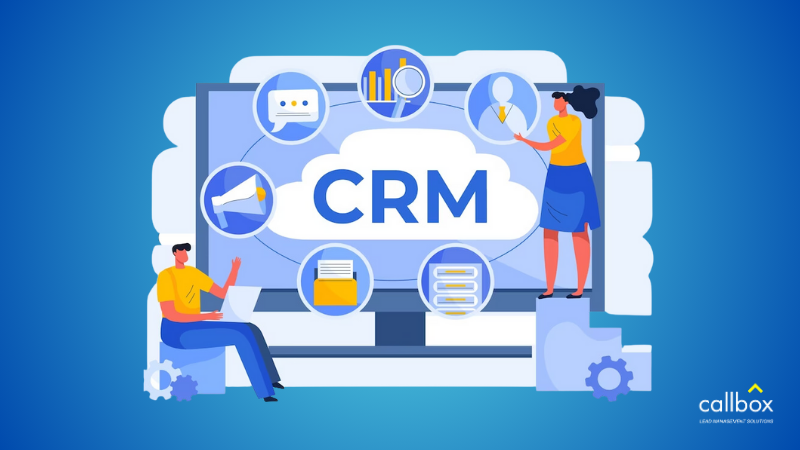
CRM is a software system that helps business owners keep track of all their relationships and communications with their clients and leads. Instead of using many databases, apps, and spreadsheets to manage client data, CRM brings everything together in one place. This leads to better time management, improved organization, efficiency, and satisfied clients.
With a CRM, you can connect all the data from your sales leads and customers, including documents, communications (calls, emails, messages, meetings, and form fills), purchases, quotes, and tasks.
Implementing a CRM system can give businesses several benefits. For instance, they can boost customer satisfaction and loyalty by providing better customer service and support.
CRM systems also help improve customer retention by monitoring customer interactions and preferences. This enables the identification and addressing of customer issues before they escalate. Moreover, businesses can also have more efficient marketing strategies by analyzing client data and identifying patterns and trends.
With real-time access to customer data provided by CRM systems, sales teams can personalize their approach to each customer and close more deals. CRM also automates many routine tasks like lead tracking and data entry. This frees up the time for employees, allowing them to focus on more value-added activities.
Finally, CRM systems provide businesses with real-time insights into customer behavior and preferences, enabling them to make more informed decisions about product development, marketing campaigns, and other key business activities.
The risks of poor CRM
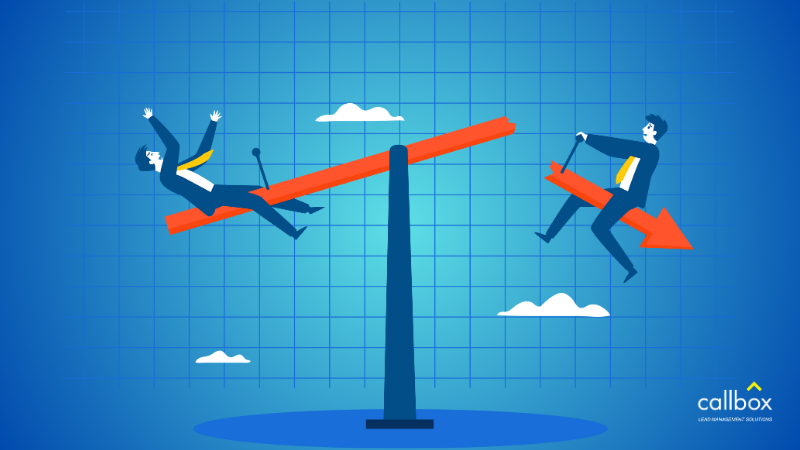
In today’s fiercely competitive market, effectively managing customer interactions is a particular problem faced by modern companies. CRM problems are becoming rampant, and the failure to address these issues
Businesses often face a series of problems in managing their customer relationships. In today’s fiercely competitive market, properly managing customer interactions poses a huge challenge for most modern companies. Poor CRM management, when left unaddressed, can lead to appalling outcomes like customer loss, company misdirection, and eventual liquidation.
Successfully building a brand these days heavily relies on providing dependable, efficient, and high-quality customer service. This best explains why businesses need to focus on retaining their existing clients and drawing in new ones to thrive.
Modern-day B2B business trends have significantly changed customer behavior. Today’s customers have higher expectations, and their first experience with a business can make or break their relationship. Gone are the days when one company takes control of an entire industry. Now, the market has become highly competitive with the rise of many industry players offering the same products and services.
To stay relevant in the ever-shifting market, businesses need to adapt to the new market reality, and done way to do this is by managing customer relationships properly. Below, we will discuss the effects and risks of poor CRM:
- Damages brand reputation
Customers who feel unvalued and unheard may take their frustrations to online reviews, social media, and even word-of-mouth. This negative feedback can spread like wildfire, harming your reputation and making it more difficult to attract new customers. - It can lead to a loss of revenue
Poor CRM sucks out your profits. First, it hurts your reputation, then you start losing new sales. Eventually, you see your regular clients walk away. Dissatisfied customers may choose to take their business elsewhere. The business may suffer from lost sales and market share as a consequence. - Poor team collaboration
Without a CRM system, it can be hard for team members across and within teams to gain insights about each other’s best practices and cover for one another in case of absences due to illness or vacation. - Customer service stagnation
Utilizing a CRM system provides you with deeper insights about your potential customers, enabling you to tailor your messaging and offer more valuable services right from the beginning. Consequently, forgoing the use of a CRM can significantly hinder your ability to achieve these objectives, resulting in a lackluster and unsatisfactory customer experience. - Departmental clashes
Customer service, sales, and marketing departments that operate in silos cause confusion, blame-shifting, and disagreement over the CS team’s efforts to keep customers happy. It also hurts the sales team’s efforts to pursue potential buyers and the marketing team’s lead generation targets. Implementing a CRM system helps maintain accountability and transparency within the team and across different departments. - Lack of continuity
- If a company doesn’t use a CRM system, there is a risk that important customer information may be lost when employees leave. This can be because the employees have stored this info in their personal files or memory. Chances are, these files may not be accessible to the business once they depart.
Implementing a CRM system can be extremely beneficial for maintaining accurate customer details since it provides a centralized location for storing all customer data. It also minimizes the risk of losing valuable customer data and enables easy customer information access by all members of the team or department.
The importance of building customer loyalty
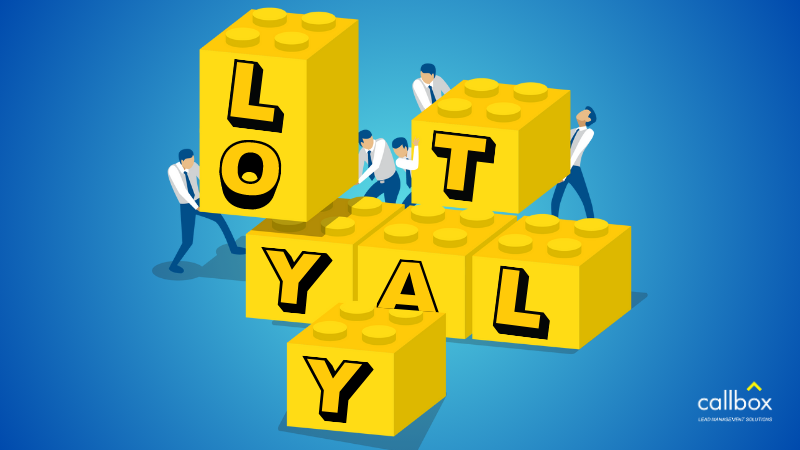
Truth be told, a business cannot exist without its customers. They are the most valuable resource for every type of business around the world. They are the ones who purchase your company’s products and services, generate profits for your business, attract new businesses, give salaries to your employees, establish rapport and brand recognition for your company, and create positive vibes about your business on different social media channels and among their circle of friends and family.
To stay relevant in the competitive market, businesses should be able to tap into and nurture their relations with their customers. They can establish a connection with their customers through a CRM system.
With a CRM system, you can gain complete knowledge of your customer’s buying patterns and behavior, preferences, and purchase histories. Knowing what your customers need before they even realize them can lead to increased loyalty and retention, effectively increasing revenue. Essentially, a CRM tool streamlines the process of collecting and organizing data and enables businesses to communicate with customers on a larger scale.
The Customer Retention Rate Formula: What you need to know
Customer retention is an important, but usually overlooked, aspect of business growth. It refers to the percentage of customers who continue to do business with your company over a period of time. It is a metric that is used to measure your company’s capacity to retain and build lasting customer relationships with them.
Here are some excellent reasons to calculate customer retention rates:
- Customer retention is more cost-effective than acquiring new ones: Research shows that acquiring new customers can cost five times more than retaining existing ones. Enhancing customer retention may result in an increase in customer lifetime value, which refers to the total revenue generated by a customer throughout their association with the company
- It can suggest possible issues with a company’s customer experience or the products/services they offer: Low customer retention rate can be a tell-tale sign that your customers aren’t satisfied with your customer service or offerings. High customer retention rates, on the other hand, signify that your business’ efforts in keeping customers engaged and satisfied are working well.
- Calculating your customer retention rate can help your business fine-tune your sales, marketing, and customer service tactics: By digging deeper into the reasons why customers stay or leave, businesses can recognize the opportunities to enhance their customer retention efforts and provide better service to meet their customers’ needs.
- Identify loyal customers: The customer retention rate is an effective indicator for businesses as it allows them to identify their most loyal clients. Such clients are more likely to endorse your business to their social networks, leading to a potential increase in revenue and customer count.
The customer retention rate formula:
Calculate the customer retention rate with this formula: [(E-N)/S] x 100 = CRR
Here are the steps to follow:
- Start with the number of customers at the end of the time period (E).
Assuming that you are calculating customer retention for the entire year, E would represent the number of customers you possess on December 31st.
- Subtract the new number of customers gained within the time period (N).
You need to eliminate the influence of new customers on your data, hence subtract all the customers acquired in the previous year from E.
- Divide the result by the number of customers at the start of the time period (S).
S represents the number of customers you had on January 1st of the previous year.
- Multiply by 100.
After performing the calculation, you’ll get a percentage value that indicates the customer retention rate. For instance, if a company had 100 customers at the start of the period (S), ended with 100 customers at the end of the period (E), and obtained 10 new customers over that period (N), their customer retention rate would be 90%: [(100-10)/100] x 100 = 90%.
Customer retention can be a struggle if you attract new customers and scale your business rapidly but fail to establish a strong customer service strategy to sustain this growth. When this happens, your capacity to keep existing clients may falter.
However, there’s some great news: You’ve already tackled the hardest part by acquiring those fresh clients. After a customer has made his initial purchase, it basically becomes easier to maintain their satisfaction levels.
Find out how our lead generation program can help you gain fresh clients and elevate your brand reputation in your target market.
How to increase client retention
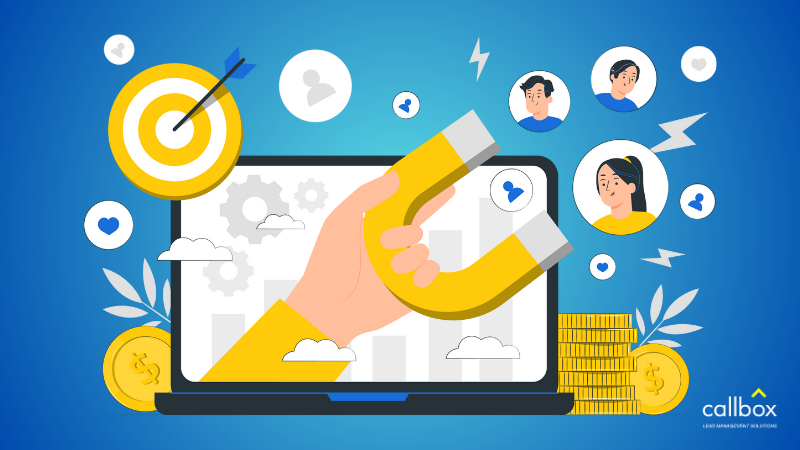
It requires a great deal of work to establish a customer’s loyalty, and once they become part of your company’s network, the last thing you want is to let them slip away. Here are some ways to help you retain your customers in the long run:
- Improve Customer Experience (providing personalized experience)
Personalization is all about understanding your client’s needs and meeting their unique needs and expectations. Tailoring your company’s customer experience allows you to build stronger connections with your customers. By learning more about your customers, you’ll also know better how to effectively engage and retain them.
Some examples of personalized customer experience include personalized product recommendations based on the client’s purchase history, unique experiences like personalized tours, events, and workshops, and special promotions and exclusive promotions to loyal customers.
By providing your customers with a personalized experience, you can show them that you value them as individuals and that you’re willing to go out of your way to cater to their needs.
- Start a Referral Program
-Referral programs are marketing strategies that incentivize existing customers to refer new ones to the business. It typically involves giving rewards like credits and discounts and can come in different forms, from word-of-mouth referrals (which are cost-effective ways of promoting your brand) to expensive digital marketing campaigns.
Starting a referral program can help you acquire new clients, boost customer loyalty, and improve your marketing effectiveness in a cost-effective way.
- Collect Client feedback
Customer feedback pertains to any kind of information provided by your clients regarding their experience with your brand, including opinions, expectations, emotions,a bd more. These can either be positive, negative, or neutral.
Customers who are given the opportunity to provide feedback feel engaged and validated. This increases their loyalty and investment in your business since they perceive that their opinions are highly regarded.
Some of the methods you can use to gather feedback are feedback forms, surveys, interviews, and Google Reviews.
Send Updates

Sending updates to your customers through social media, blogs, and emails can help you retain customers by keeping them informed and engaged about your brand and offerings.
Updates, when done regularly, can help you establish a relationship based on trust and transparency, which are both essential in building loyalty to your brand. Aside from that, updating your customers allows you to demonstrate the value and advantages of your products and services, therefore providing the platform to promote your offerings and encourage your customers to make a purchase.
Keeping in touch with your customers can also help you address the issues and concerns they may experience. This helps prevent customer churn.
Strengthen Customer Support
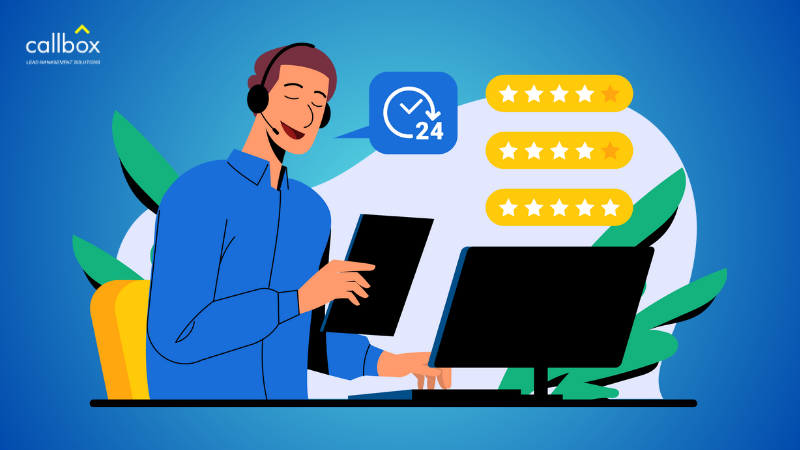
A company that provides excellent customer service is more likely to retain its clients organically. The most effective customer service teams think outside the box and go out of their way to understand their customers’ specific needs.
By resolving issues, imparting relevant information, building connections, and providing personalized experiences, customer support can show customers that they are valued. This can lead to loyalty, repeat business, and eventually drive success and growth for the company.
Compliance with Ethical Rules
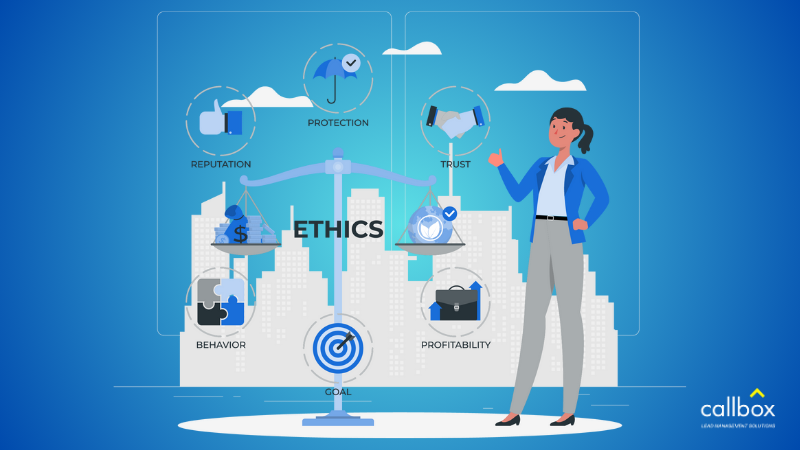
The importance of ethical compliance can never be understated in all types of business. Deemed valuable, ethics in dealing with customers gives your company a good reputation and shows that you are trustworthy.
Compliance with ethical ways and standards are critical in retaining customers in Australia, given that it shows that your company operates with integrity and a strong sense of social responsibility.
There are various Australian ethical regulations like privacy laws, anti-discrimination laws, and consumer protection laws that are expected to be complied with by companies. Failure to do such can lead to legal action, cause damage to your brand’s image, and lose consumer trust.
Outsource your efforts to a reliable partner. Work only with the experts
Customer retention means using certain strategies to make sure that most of your customers stay loyal to your brand and stick around for a long time. This can get challenging and lead to losses when you employ the wrong tactics, which is why getting help from a reliable B2B lead generation company with good customer management is a must.
Meet Callbox, the biggest outsourced B2B lead generation and outside sales support provider across businesses around the globe. By using an Account-Based Marketing (ABM) approach to reach over 35 million businesses, it helps companies expand markets using six lead generation channels: voice, chat, email, social media, webinars, and website.
Callbox Pipeline has been helping businesses in Australia power up their outsourced lead generation efforts through its multi-touch multi-channel marketing capacities. Signing up with any of Callbox’s lead management services not only fills your pipeline with warm B2B leads, but allows you to enjoy the advantages of our CRM software that’s specifically designed to answer your outsourced sales and marketing campaign needs. Read our client’s success stories.
With Callbox’s CRM tools, your business can enjoy the following benefits:
Improved lead management: Manage your leads more effectively by tracking interactions with prospects and storing important data in one centralized location.
Higher level of customer engagement: Businesses, through our CRM software, can be able to send out targeted emails, and personalized marketing campaigns, and provide a more personalized experience to customers.
Increased sales performance: Enable your team to focus more on closing deals and engaging with customers by automating your sales and marketing processes.
Real-time reporting and analytics: Tracking your sales pipeline, measuring your ROI, and making data-driven decisions to improve your sales and marketing performance is possible through real-time analytics and reporting.
Seamless tool integration: Seamless integration with other marketing and sales tools such as social media, email, and web analytics makes it easy for your business to manage your efforts and gain a more comprehensive view of your prospects and customers.
Businesses in Australia who want to succeed in the modern-day B2B arena need to have a good and efficient customer relationship management (CRM) system, and this is possible by partnering with a trusted team of B2B experts like Callbox.
Call us today and start your business success story!













